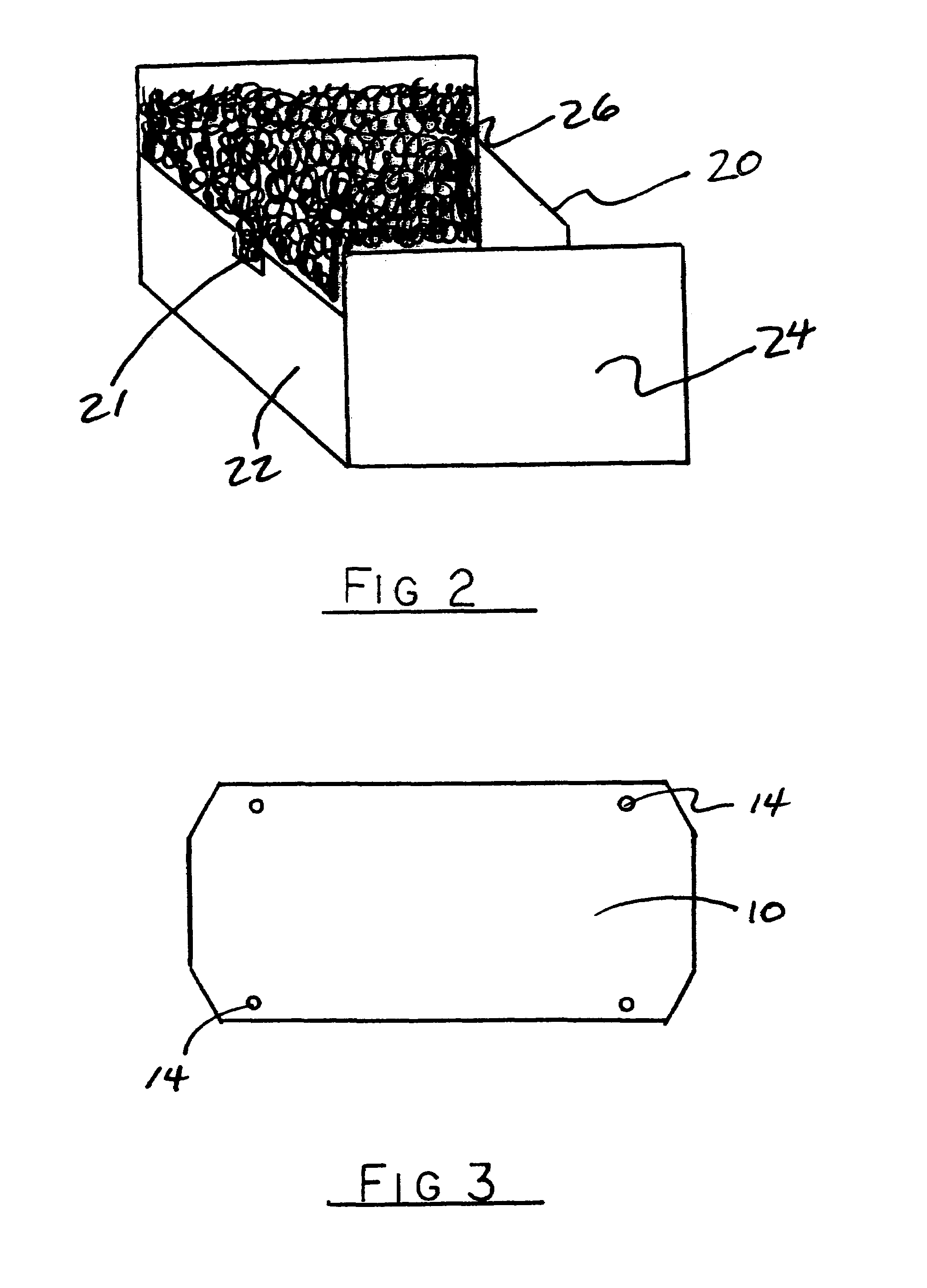No maintenance lethal mosquito breeding trap
a technology of maintenance and lethal traps, applied in insect catchers and killers, animal hunting, animal husbandry, etc., can solve problems such as affecting the natural order
- Summary
- Abstract
- Description
- Claims
- Application Information
AI Technical Summary
Benefits of technology
Problems solved by technology
Method used
Image
Examples
Embodiment Construction
[0040]The mosquito trap can be round, square, rectangular or even spherical. It can be made out of paper, paperboard, wood, gypsum, cellulose, composites, plastic, metal, fiberglass, or any other formable material. Since the preferred embodiment contemplated in this patent is that the device will be made from paperboard, and that it will be rectangular in shape, this is the example that will be used throughout this description. Although measurements are given for this preferred embodiment the reader should understand that the size of the trap can vary greatly and still be as effective as the one herein described.
[0041]The trap is made up of three components: 1) the Top FIG. 1; the Water Container FIG. 2; and the Bottom FIG. 3. All three components are made from paperboard, a common material used extensively in the packaging industry and available with the specific characteristics needed to produce the individual result required by each product produced These characteristics include ...
PUM
 Login to View More
Login to View More Abstract
Description
Claims
Application Information
 Login to View More
Login to View More - R&D
- Intellectual Property
- Life Sciences
- Materials
- Tech Scout
- Unparalleled Data Quality
- Higher Quality Content
- 60% Fewer Hallucinations
Browse by: Latest US Patents, China's latest patents, Technical Efficacy Thesaurus, Application Domain, Technology Topic, Popular Technical Reports.
© 2025 PatSnap. All rights reserved.Legal|Privacy policy|Modern Slavery Act Transparency Statement|Sitemap|About US| Contact US: help@patsnap.com



